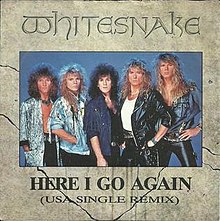Il dissoluto punito, ossia il |
 |
Composed: 1787 First Performed: October 29, 1787 Peak: -- Sales (in millions): -- Genre: classical > opera |
Parts/Movements:
Act I
Act II
Average Duration: 164:20 |
Rating: 3.369 out of 5.00 (average of 7 ratings)
Awards: (Click on award to learn more). |
About the Work: Don Giovanni is a two-act opera was billed at the time as “drama giocoso”, which refers to a mix of serious and comedic action. WK It tells the story of seducing legend Don Juan (“Don Giovanni” in Italian) and how he is destroyed by his excesses. WK Mozart was in Prague during the first couple months of 1787 to attend and conduct performances of several works, most notably Le nozze di Figaro, his most recent opera. While there, he was commissioned to create a new opera by impresario Pasquale Bondini. JH It premiered in Prague on October 29, 1787. Reports suggest Mozart didn’t complete the work until that day or the day before. WK It was well-received, as was generally the case for Mozart’s work in Prague. The Prager Oberamtszeitung reported, “Connoisseurs and musicians say that Prague has never heard the like.” WK By contrast, reviews of the opera’s first Vienna performances in 1788 “suggested mild dissatisfaction with the work’s extended length and unnecessary plot elaborations.” JH According to Operabase, it is the seventh most-performed opera worldwide. WK The final score used double woodwinds, horns, trumpets, timpani, and strings. WK He used three onstage ensembles for a ballroom dance scene at the end of the first act. WK In addition, “Mozart creates levels of dramatic expression through recitativo secco, recitative accompagnato, and aria styles…Recitativo accompagnato is reserved for moments of great emotion, in which the accompanying orchestra virtually assumes a dramatic role. In Act Two, Scene Ten (d), the orchestra virtually speaks for the conflicted Donna Elvira… conveying her rage and slurred couplets giving musical voice to her sighs.” JH “The dramatically stagnant da capo aria that was the mainstay of the operas of George Friedrich Handel is virtually absent from Don Giovanni. Leporello’s so-called ‘catalog aria’ (Madamina, il catalogo è questo) in Act One, Scene Five, for example, suggests both through-composed and bi-partite formal elements. Some arias in Don Giovanni, however, such as Don Ottavio’s Act One, Scene Fourteen aria (Dalla sue pace), contain traces of the ternary form idea of returning to beginning material after a section of contrasting music. Donna Elvira’s aria in Act Two, Scene Ten(d) (Mi tradì quell'alma ingrate) juxtaposes ternary and rondo form ideas, reinforcing through musical form Donna Elvira’s returning to the same position of pity and longing for Don Giovanni.” JH “In keeping with the function of the opera overture to introduce the opera’s important themes, the music that begins the overture, marked by alternations between the D minor tonic and its dominant, returns in the Commendatore’s scene in Act Two, Scene Fifteen. The drama of this scene is set in relief by the light use popular music in the preceding party scene, where the on-stage musicians play melodies from arias by Martín y Soler, Sarti, and even Mozart’s own Le nozze di Figaro during Don Giovanni’s party. Don Giovanni’s canzonetta (Deh, vieni alla fenestra, o mio Tesoro) in Act Two, Scene Three, an airy strophic song scored for pizzicato strings and mandolin, is a similarly witty musical juxtaposition of planes of realism.” JH |
Resources and Related Links:
Last updated 4/17/2022. |









